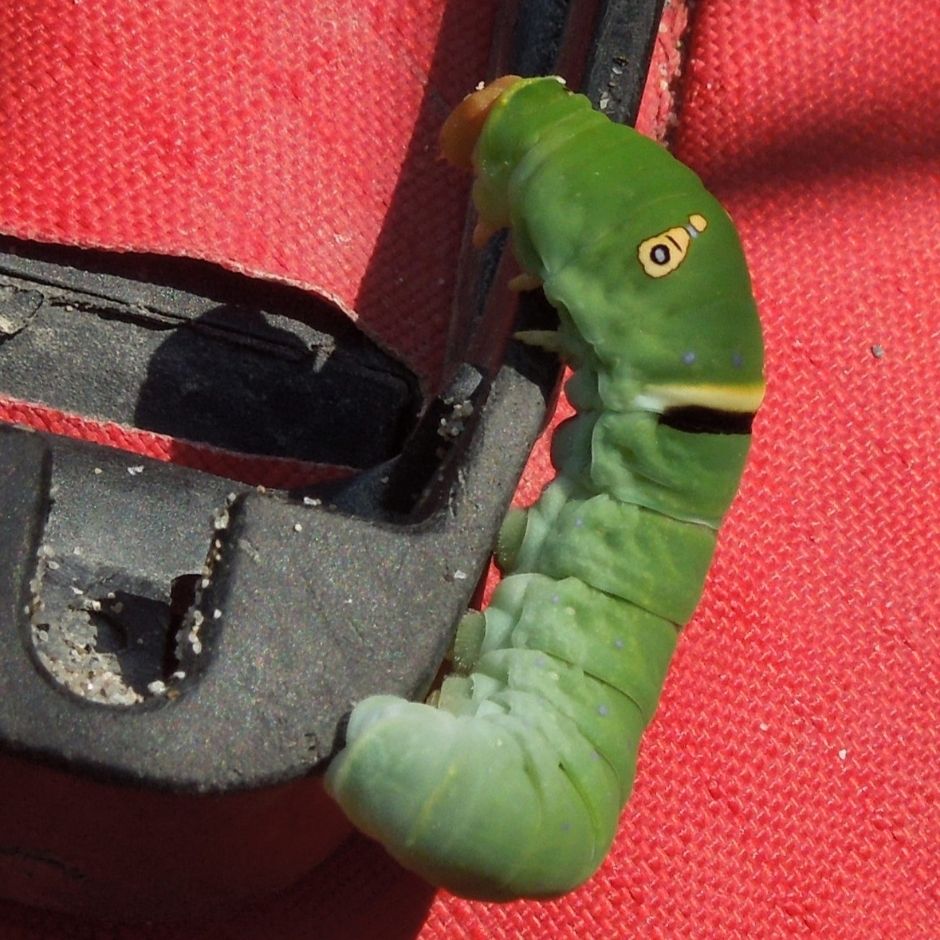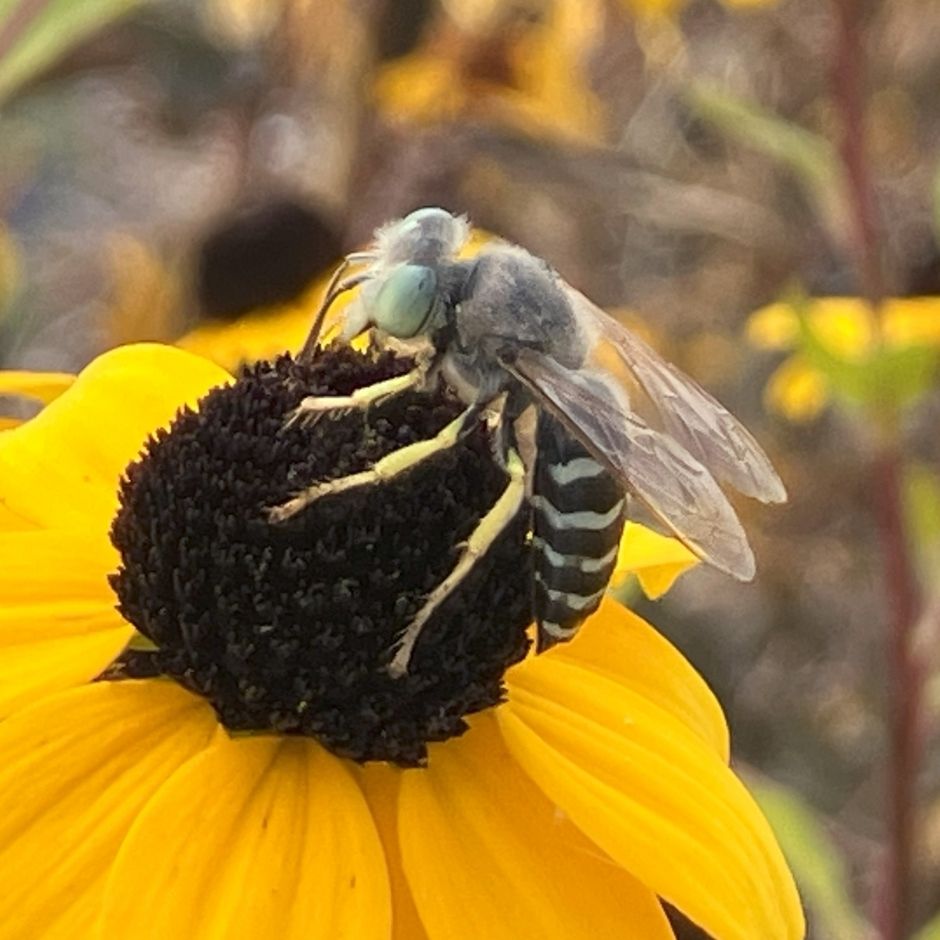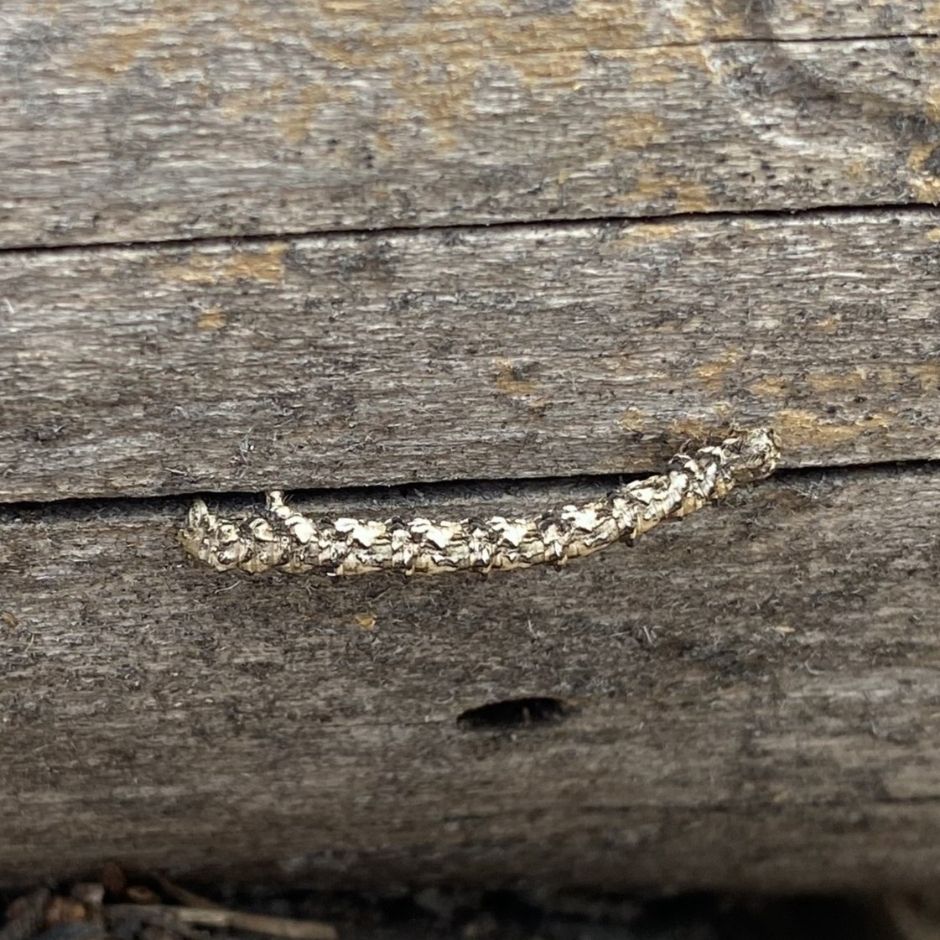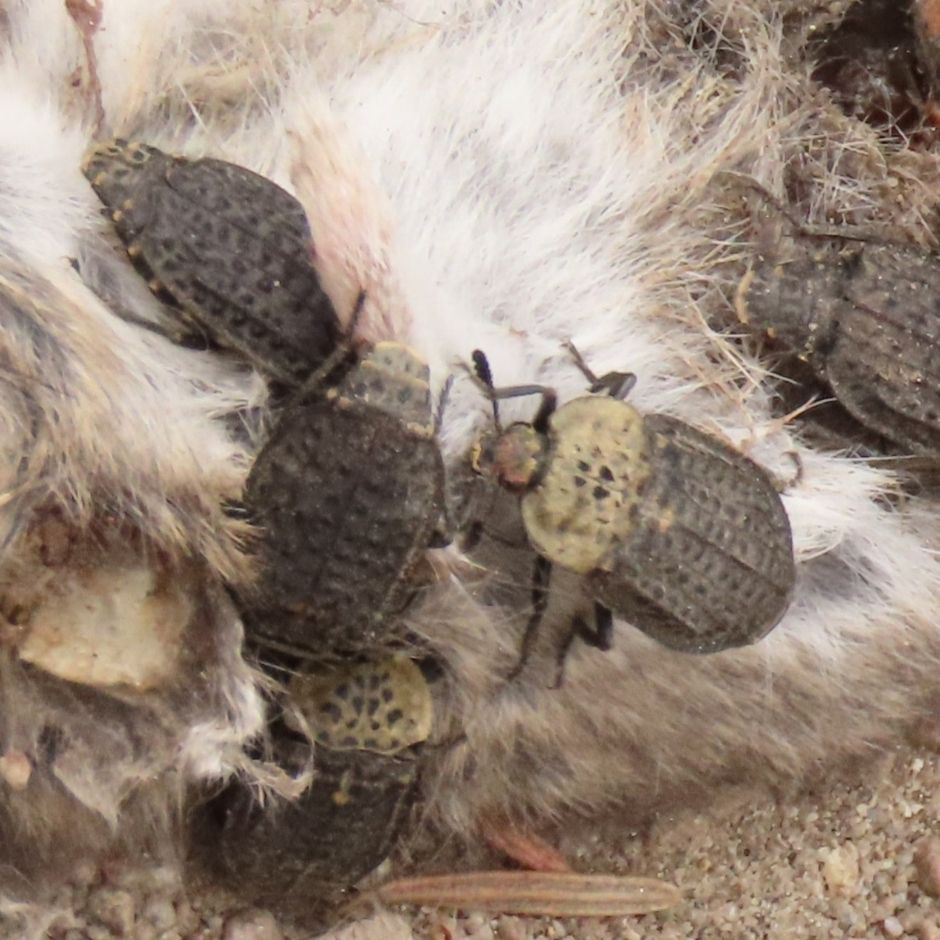Warm sunny days are keeping bug diversity and activity high! And with no frost in the immediate forecast, we expect the same to hold true for at least a little while longer. We hope you are getting out and soaking up some sunshine, too – while you’re at it, keep your eyes and ears open to the little things that are out living their lives around you. Let us know what you find!
Submit your bug pictures to bugid@missoulabutterflyhouse.org (and remember to include your name, the date, and the location where you took the photo)!
Header photo: Our state butterfly is often the first and last butterfly we see every year. Mourning Cloaks overwinter as adults and can often be seen emerging on sunny days to warm up. After the adults breed in the spring, they die off, and the following generation (the one we are currently seeing) takes wing in late summer to early fall. – Connie Geiger, September 5, 2025, Helena, MT

Bronzed Tiger Beetle
Cicindela repanda
This species is widely distributed across most of North America, living in sand, gravel, or clay soil with sparse vegetation adjacent to streams and rivers. Like other tiger beetles (family Cicindelidae), these insects are FAST. Tiger beetles have been clocked running at 1.38 feet per second (about 29 body lengths). That may not sound like a lot, but factoring in their size, it’s similar to a grizzly bear running over 135 miles per hour. They actually run so fast that they outrun the capacity of their eyes and brain to process what they are seeing. They literally run themselves blind and need to stop, look around, and then continue the pursuit of their prey.
Kelly Dix, August 28, 2025, Salmon River, ID

Mylitta Crescent
Phyciodes mylitta
Crescent butterflies (genus Phyciodes) are so-called for the crescent-shaped spot on the underside of their hindwing, but their intricate orange-and-black patterns on the upper side are more likely to catch your eye. These beauties fly direct and low with an alternating series of flaps and flat-winged glides. The Mylitta graces a wide variety of habitats, including urban areas, dry fields and wet meadows, woodland openings, and mountain canyons, from sea level to tree line. Caterpillars primarily feed on thistles (Carduus spp. and Cirsium spp.).
Klara Briknarova, August 29, 2025, Missoula, MT

Lupine Bug
Megalotomus quinquespinosus
The Lupine Bug (Megalotomus quinquespinosus) belongs to the family Alydidae (broad-headed bugs) and is closely related to another true bug common around this time, the leaf-footed bugs (family Coreidae). Though its name suggests a propensity for eating lupine (Lupinus spp.), it doesn’t discriminate and will feed on most legumes (family Fabaceae). It can be differentiated from other inconspicuous true bugs in our area by the white markings at the base of its antennal clubs.
Kelly Dix, August 28, 2025, Salmon River, ID

Western Tiger Swallowtail
Papilio rutulus
We are not 100% certain, but believe this is a Western Tiger Swallowtail (Papilio rutulus) caterpillar. The Two-tailed Swallowtail caterpillar (Papilio multicaudata) looks very similar. According to David J. Ferguson, Contributing Editor for BugGuide, “the best clue [for the Two-tailed] is the black edge of the pupil of the large eye spot, which is a thin line. In Western it should be a thick border.” Both are among our largest and arguably most spectacular butterflies, sporting bold black and yellow wings. They are common in parks and gardens but can also be spotted in cities and suburbs thanks to the popularity of using their host plants – particularly sycamores (Platanus), but also cottonwood and aspen (Populus), birch (Betula), elm (Ulmus), willow (Salix), and alder (Alnus) – in urban landscaping. Males often congregate in large “puddling parties” near stream banks or puddles to extract minerals and water from the damp earth. We only see one flight period in this part of their range, and by fall, the new generation of caterpillars will pupate and overwinter in their chrysalids.
Kelly Dix, August 28, 2025, Salmon River, ID

Purplish Copper
Tharsalea helloides
These coppers are currently making their second appearance of the year in western Montana. We have two flights of Purplish Coppers – the first from May-July and the second from August-October. During the second flight, females will lay eggs near the base of their host plants, mainly species of knotweed (Polygonum spp.) and dock (Rumex spp.). The eggs overwinter, and the caterpillars will emerge soon after the return of spring-like temperatures the following year.
Klara Briknarova, September 6, 2025, Rocky Mountain Gardens, Missoula, MT

American Sand Wasp
Bembix americana
As its name suggests, the American Sand Wasp (Bembix americana) is widespread across North America, digging its shallow, solitary nests in loose sand and soil. Like many predatory wasps, the adults feed on nectar but prey on insects (usually flies) to feed their offspring. A female lays an egg in a single chamber and then supplies it with prey items. If conditions are right, several females may nest in close proximity, making them easy targets for parasitoids. However, in a strange turn, female sand wasps may prey on their parasites, an uncommon occurrence in nature.
Misty Nelson, September 8, 2025, Rocky Mountain Gardens, Missoula, MT

Geometer Moth Caterpillar
Family Geometridae
Larvae of moths in the family Geometridae are commonly referred to as “inchworms.” An inchworm only has two pairs of fleshy prolegs near the hind end of its abdomen, along with the usual six legs on the thorax. It moves by bringing the rear part of the abdomen toward the thorax, forming a loop out of its body, which results in a jerky movement allowing them to “inch” along. Many geometrids, including this one, mimic twigs in posture and color. They feed on leaves of various plants, and some are pests of crops and forests. There are 600 species known to occur in the Pacific Northwest, making this caterpillar tricky to identify.
Jeanne Parker, September 8 2025, Glacier National Park, MT

Half-black Bumble Bee
Bombus vagans
The Half-black Bumble Bee (Bombus vagans) is a small to medium sized bumble bee with a wide distribution in North America, ranging across Canada and the northern United States. In the central and eastern U.S., it is found as far south as Georgia. Covering such a wide region, it is not surprising that it feeds from a wide variety of plants. Its hairs appear a bit shaggier than other bumble bees, and it generally has a black circle / patch in the middle of the thorax. Both queens and males are active well into October. These two – the larger queen at the top, the smaller male at the bottom – are doing their part to ensure that a new colony will be around next year.
Kristi DuBois, September 9, 2025, Missoula, MT

Common Green Darner
Anax junius
The Common Green Darner (Anax junius) is one of the largest species of dragonfly, with a complex life history that is not well understood due to their migratory behavior. This individual will likely make the trek south in the coming months, where it will spend the winter in Texas or Mexico. Listen to our Bug Bytes podcast to learn more about this dragonfly’s not-so-common life history.
Deb Hoagland, September 9, 2025, Missoula, MT

Northern Carrion Beetle
Thanatophilus lapponicus
As its name suggests, this beetle is found on carrion, like this mouse carcass. Adults feed on both the carcass and other insects at the feeding site, especially maggots (fly larvae), while the larvae feed exclusively on the carcass. This widespread species, found across North and Central America (as well as Eurasia), experiences two generations per year, even in temperate climates like that in western Montana. The second generation overwinters in its adult stage.
Connie Geiger, September 10, 2025, Helena, MT